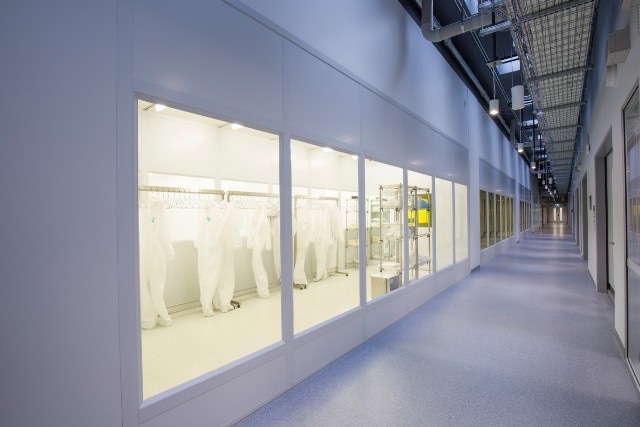The Quantum Nanoscience Laboratory at the University of Sydney, headed by Professor David Reilly, is among a small collection of labs worldwide that are collaborating with Microsoft on quantum computing by doing revolutionary engineering and physics.
 The clean room at the Sydney Nanoscience Hub.
The clean room at the Sydney Nanoscience Hub.
Leading scientists and directors from Microsoft’s quantum computing program are visiting Australia to speak at the launch of the Australian Institute for Nanoscale Science and Technology (AINST) and its headquarters, a new $150m building where electrons are manipulated at temperatures of just above -273.15C – colder than deep space.
For more than a decade, Microsoft has been undertaking theoretical quantum research through Station Q at the University of California, Santa Barbara, with an eye towards one day building a scalable universal quantum computer. Now the blue-sky investment is ramping up as the world’s largest software maker extends its efforts with experimental research that could usher in a new digital revolution.
A select and very small collection of labs worldwide are collaborating with Microsoft on quantum computing by doing revolutionary engineering and physics, including the Quantum Nanoscience Laboratory at the University of Sydney headed by Professor David Reilly – whose group is world-leading in understanding the interface between quantum physics and the grand engineering challenges of building reliable quantum machines.
Sydney Uni launches the Australian Institute for Nanoscale Science and Technology
Visiting Australia from Microsoft’s headquarters in Redmond, Washington, with a colleague from the Quantum Architectures and Computation group (QuArC), is distinguished scientist and Managing Director of MSR NexT: Special Projects Dr Norm Whitaker.
Dr Whitaker arrived in Sydney this week and was scheduled to spend a couple of days touring the new Sydney Nanoscience Hub – the first purpose-built facility for nanoscience in Australia co-funded with $40m from the Australian government – before addressing a meeting of leading businesses as part of the official launch proceedings.
"We are extremely pleased to have the University of Sydney as a partner on this journey," said Dr. Whitaker. "The group here represents the rare combination of world-class research abilities with a pragmatic, can-do enthusiasm."
Microsoft Research Station Q Director and Fields Medallist Michael Freedman said: “The Microsoft quantum program pushes to the very edge of physics and engineering in its goal of harnessing topological effects for computation.
“To succeed, we have made a worldwide search for the most dynamic and innovative collaborators; In David Reilly and his team at the Australian Institute for Nanoscale Science and Technology, we have found such a partner.”
As part of the work leading Station Q Sydney, Professor Reilly said his focus in the next few years would be to scale up, constructing specialised electronic systems that operate both at room and cryogenic temperatures and go well beyond the specifications of off-the-shelf technology.
“Building a quantum computer is a daunting challenge; it’s something that will only be realised in partnership with the world’s biggest technology companies and we’ve been fortunate to partner with Microsoft,” Professor Reilly said.
“To build a quantum computer you need more than just the [quantum] qubits; more than just the elementary constituents of matter – the electrons and so on. You also need a range of electronics and classical control technology that is pushing the limit of what’s available today.
“So we’ve been focusing on both aspects in parallel and our plan is over the next few years to see these classical and quantum streams meet up in order to be able to build quantum machines.”
University of Sydney Vice-Chancellor Dr Michael Spence said: “Sydney’s membership in this highly exclusive international team represents a significant endorsement of our capacity in this area, focusing on long-term research, which can also have shorter-term spin-offs.”
Source: http://sydney.edu.au/